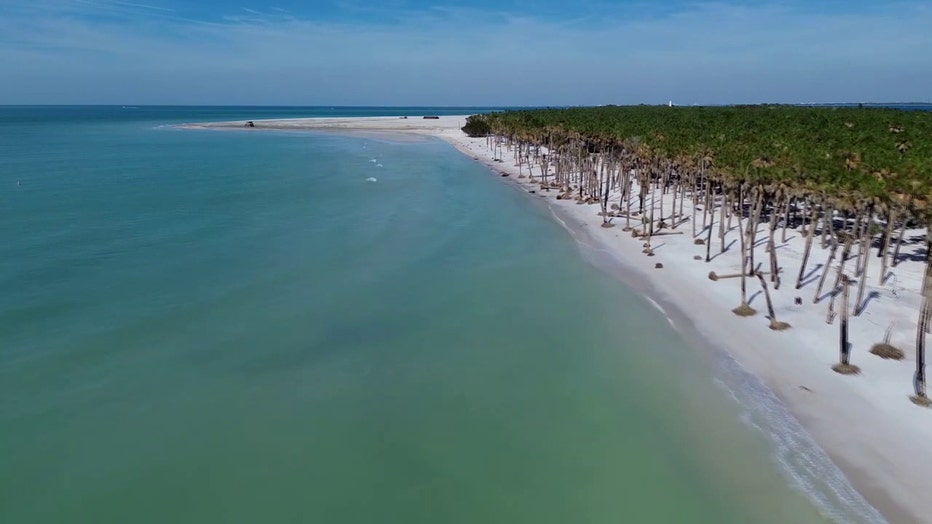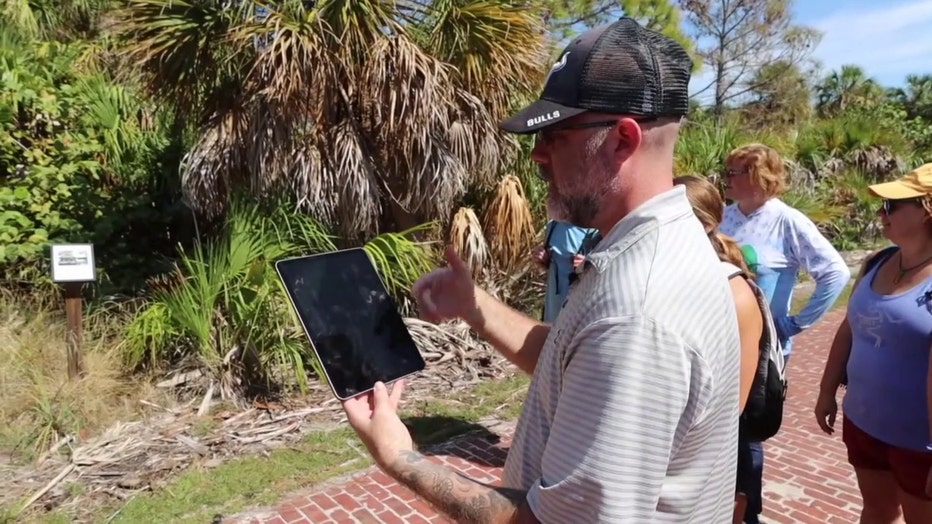USF preserves Egmont Key with 3D app as barrier island 'washes away'

USF preserving Egmont Key
Egmont Key, the barrier island between Pinellas and Manatee County, is a picture of paradise with a significant past but it's vanishing before our eyes. Now a team from USF is trying to preserve it while a group of environmentalists are hoping to save it.
ST. PETERSBURG, Fla. - Egmont Key, the barrier island between Pinellas and Manatee County, is a picture of paradise with a significant past, but it's vanishing before our eyes. Now, a team from the University of South Florida is trying to preserve it, while a group of environmentalists are hoping to save it.
A boaters paradise sporting tropical blue waters and white sandy beaches accessible only by boat, Egmont Key boasts a rich history. But erosion, storms and rising sea levels are decimating this Tampa Bay treasure.
It was occupied by the Union Navy in the Civil War during the blockade of the South, a haven for residents against secession, a yellow fever quarantine site during the Spanish-American War, and a concentration camp for Seminoles on their way to reservations after the third Seminole War in 1858.
MAKN WAVES: Hurricane Irma ripped a hole in Shell Key, but that's a good thing
"There's just so much history out here, layers and layers of history, going back literally centuries," said Richard Sanchez, the president of the volunteer Egmont Key Alliance.

His group works to preserve and protect the island, installing educational signs for visitors at all of its historic sites, which are visited by close to 200,000 people each year. It's lighthouse, erected in 1857, still stands.
Remnants of the Fort remain but have been battered over the years by mother nature. And calls to protect it have, so far, gone unanswered.
The gun batteries on the northwest end collapsed due to erosion in the 1980s and much of the western side of the island has washed away over the years. Photos show Egmont Key measuring around 540 acres in 1900, and today it's lost more than half of itself, measuring around 200 acres.
MORE: Harbor pilots help guide massive ships in Tampa Bay waters
"The island is washing away," said Dr. Laura Harrison, who heads USF's Access 3D lab.
Once USF learned the Florida Trust for Historic Preservation named Egmont Key the state's most endangered island, they made preserving it a priority.

Harrison and her students scanned the island with a LiDAR (Light Direction and Ranging) scanner that creates 3D models of everything. And its high-definition detail captures every crack, every crevice and every bolt of everything that's left.
Those structures that no longer exist have been recreated digitally based on archival information.
"We're able to use the digital technology which has really no footprint, so we can be good stewards of the land while also educating the public about the island's amazing history," Harrison said.
READ: Calls to reopen Midnight Pass grow with nearby waterway behind it 'dying'
They're turning the aging island into a 3-D lab with a [soon to be available] downloadable app for your phone or iPad. As you walk around, Bluetooth indicators pop up to show you where structures once stood or inform you about the history of them and the structures still standing.

Eventually, they also hope to have freestanding kiosks around the community with virtual reality headsets taking guests who can't make it to the island – on a virtual reality tour of it.
"There's so much more here than meets the eye, so we're hoping our app can be a little piece of that," Harrison said.
USF Associate Professor Dr. Brooke Hansen hopes it will do more than just educate.
"The other part is to try to instill a sense of stewardship for visitors, so the more they learn, the more they'd care about the place," Hansen said.
As for slowing mother nature, sand has been added to the west side of the island recently, but only because they were able to save sand from a dredging project on the north end of the port.
MORE: New trackers help us understand and protect tarpon

Adding rocks would slow erosion, but many feel that would endanger the many loggerhead turtles that nest on the beach.
Still, Sanchez and his alliance members are hopeful for solutions. If not for those who use and appreciate it, for the many shorebirds and turtles.
When loggerhead turtles reach maturity around 30 years old, they return to nest where they were born.
"So, it's conceivable if we don't preserve the island, the turtles hatched this year would come back and there would be no Egmont Key. And then they'll need to find another place," Sanchez said with a frown. "And of course, there isn't any other place, really."
The Egmont Key Alliance has recently passed on duties of preserving Egmont Key to "Take MAR," a committee within the same non-profit group. Take MAR said they are dedicated to restoring, preserving and regenerating the island. They are looking for volunteers and supporters as well, and you can find out more about them here.
USF's app is still in development, but they hope to release it soon as they seek community partners as well. You can find more about them here.

